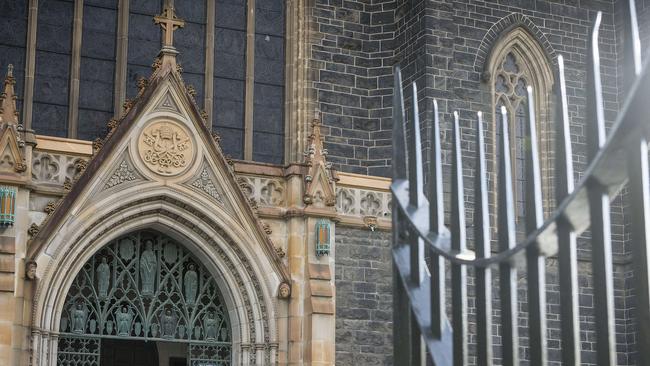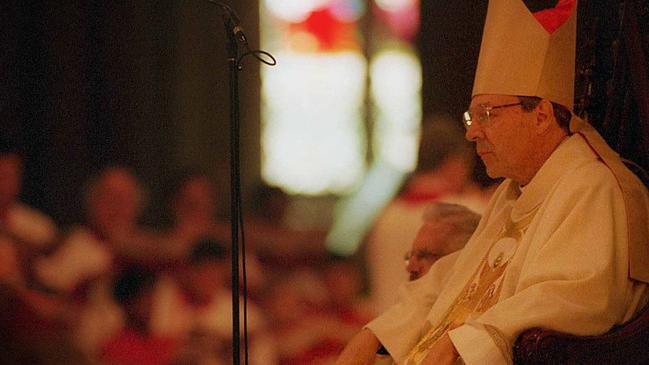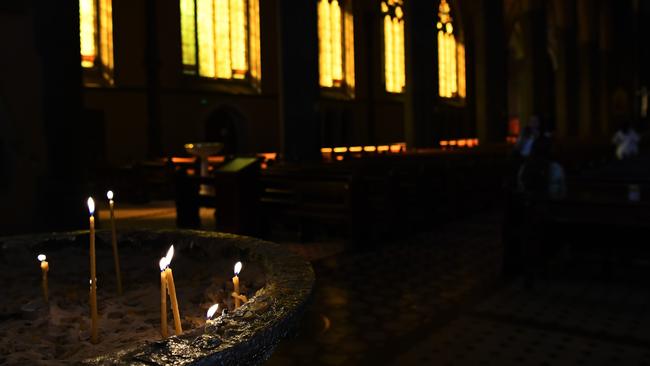Cardinal George Pell’s defence to child sex charges centred on ten key arguments
George Pell had always denied child sex claims against him, and his defence was based on ten key things he hoped would prove his innocence. Shannon Deery explains.
Cardinal George Pell always denied any and all wrongdoing, slamming child sex allegations against him as “deranged falsehoods”.
He told police he could prove his innocence, but failed to convince a jury which instead found him guilty of sex offences involving two choir boys at St Patrick’s Cathedral in Melbourne in the mid 1990s.
RELATED:
PELL GUILTY OF CHILD SEX CHARGES
THE RISE AND FALL OF GEORGE PELL
His defence relied on these 10 key arguments.
The timing of renovations
Victim AA alleged he was abused by Pell after a Sunday Solemn mass in the mid 1990s, and then again a month later.
It was established at trial that Pell said just two solemn masses that year.
The cathedral had been under renovation so was not used until November of the year the victim said the offences happened.
AA was adamant the second incident occurred in that year, but Pell was able to establish that was impossible.

The timing of mass
Pell also argued it would have been impossible for him to be in the sacristy, robed and alone, so quickly after mass ended.
Instead, he says he routinely spoke to parishioners on the steps of the Cathedral before being escorted back to the sacristy by at least one other priest.
He was never alone
Pell argued that while Archbishop he would never have been alone while robed at the Cathedral.
His legal team compared him to the Queen, saying she would never be left alone while robed for a ceremonial occasion.
His master of ceremonies, Monsignor Charles Portelli testified that: “I recall the first two occasions he said mass and I can say I was with him the whole time he was robed on those days”.
There were people everywhere
It was argued that it would be impossible for Pell to molest two boys in the sacristy, or corridor, after mass because of the amount of potential witnesses in the area.
Former sacristan Max Potter, who worked at the Cathedral for decades, told the court he would unlock the sacristy in the minutes after mass when altar servers would start returning to the room to disrobe.
They would also clean up after mass, meaning the sacristy was only ever momentarily unattended.

Only a madman
It was Pell’s legal team’s submission that “only a madman would attempt to rape boys in the sacristy immediately after mass.”
They argued dozens of people would be around watching over the newly appointed Archbishop.
Choirboys don’t go unseen
The prosecution case centred on the fact that the two complainants were able to flee from a procession of choristers, altar servers, and priests, leaving church after mass in order to make their way to the sacristy.
Pell argued it would have been impossible for them to escape the carefully choreographed procession that was monitored with military like precision, without being noticed, and reprimanded.
Further, he argued that even if they did, it would have been impossible for them to return to the choir rehearsal that immediately followed mass without being noticed.
No witnesses testified that they could ever remember a single occasion when a choirboy left the procession unexpectedly.
The organists would know
Even if the boys did flee, Pell argued they would have most certainly been seen sneaking into the sacristy by nearby organists who continued playing for up to 15 minutes after mass as the congregation left the church.

Robes made it impossible
It was alleged that Pell abused the boys while robed in his Archbishop’s robes, consisting of multi-layered dress worn over his normal clothing.
The robes were shown to the jury and exhibited as part of the trial with a demonstration of how they were worn. Pell argued that the nature of the robes meant that was impossible for him to expose himself while wearing them.
There was no red wine
AA testified that he and victim BB were caught drinking red wine in the sacristy.
Pell argued that at the time only white wine was used at the Cathedral because of a preference by the then Dean of the Cathedral.
Evidence was called by a wine supplier, but it remained unclear whether white, red or both wines, were available at the Cathedral at the time.
Pell’s team argued that AA made up the wine reference based on Catholic tradition of using red wine during mass.
They remained silent
The silence of both boys in the years after the abuse was used by Pell as strong evidence that it never happened.
His team argued that if AA and BB were abused they would have, at the very least, discussed it among themselves.
There was no evidence at trial that they had discussed it with anybody.
AA swore he didn’t discuss it with BB, and there was evidence that even when asked by his mother, BB denied being abused while a chorister.
MORE NEWS:
HOW CHURCH FAILED BALLARAT KIDS
Follow Shannon on Twitter
